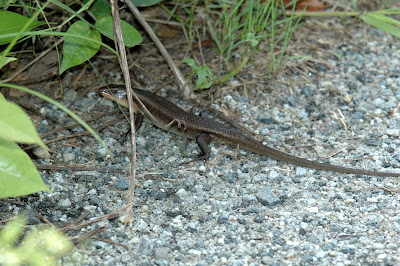The tall lallang beckons us to its hidden treasure trove.
 What did we chanced upon but a bird busied building a home, not of concrete but of grass. Without blueprint and any tools but with its beak, it crafted a home. Safe from storm and feasome wind, little wings will one day soar.
What did we chanced upon but a bird busied building a home, not of concrete but of grass. Without blueprint and any tools but with its beak, it crafted a home. Safe from storm and feasome wind, little wings will one day soar.
 Still in progress this weaver bird toiled, how will its nest be.
Still in progress this weaver bird toiled, how will its nest be.
Well from the neighbour we can see, a beauty it will soon be.

A landing with an opening, now if I with civil engineering degree, calculator and supercomputer, I wonder if I can come up with such design. A few anchoring strong strands on the right branch, followed by soft tender strands of tall grass, not forgetting the mummy and the birdlings that are to come. With such design - I always wonder - who then is the master architect?
Well this is but one design, how about this with opening from below! Who told them this must be so!

Well it goes this way, both types of nests are the same. The male weaver bird build the helmet nest (those without the long tube) and displays to the female. The female inspects the nest, if she likes it, she will mate with him and the male will finish building the nest (with the long tube) before she lays her eggs in the chamber. If she doesn't like the nest, she breaks the point where the nest is attached to the nest and the process tedious process of building starts again. When she lays her eggs, the male will go build any helmet nest to attract another female. He does not take care of the eggs and chicks.
Such is their life, the man builds the house but the female the home, sadly we see this reflected in our human home!
This time the tide was low, wading birds were busied hunting in the mud flat.
 Little Heron (Butorides striatus)
Little Heron (Butorides striatus)  Grey Heron (Ardea cinera)
Grey Heron (Ardea cinera)Other denizens of mangrove were just as busy.
 Giant Mudskipper (Periophthalmodon schlosseri)
Giant Mudskipper (Periophthalmodon schlosseri) Mangrove Skink
Mangrove Skink Female streaked weaver bird, a rare introduced species
Female streaked weaver bird, a rare introduced species
 and finally in this treasure trove, mystery still abound like this unknown bird hiding in the mangrove roots. (Bird identified as Ashy Tailorbird)
and finally in this treasure trove, mystery still abound like this unknown bird hiding in the mangrove roots. (Bird identified as Ashy Tailorbird)
A big thank you to Wang Luan Keng from RMBR for ID the birds and the documentary of the nest building of the Weaver Bird.



No comments:
Post a Comment